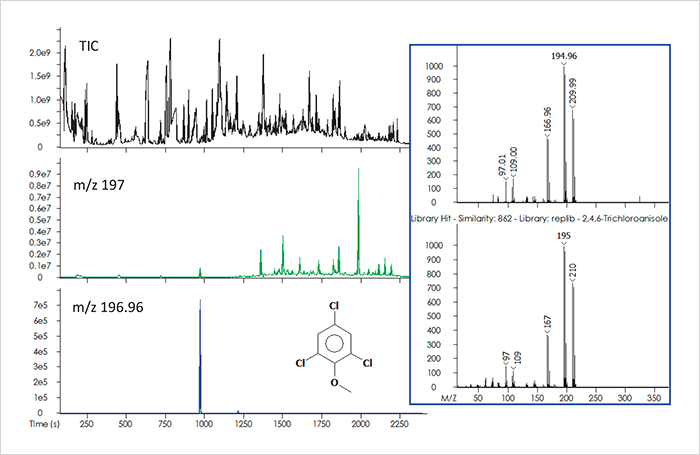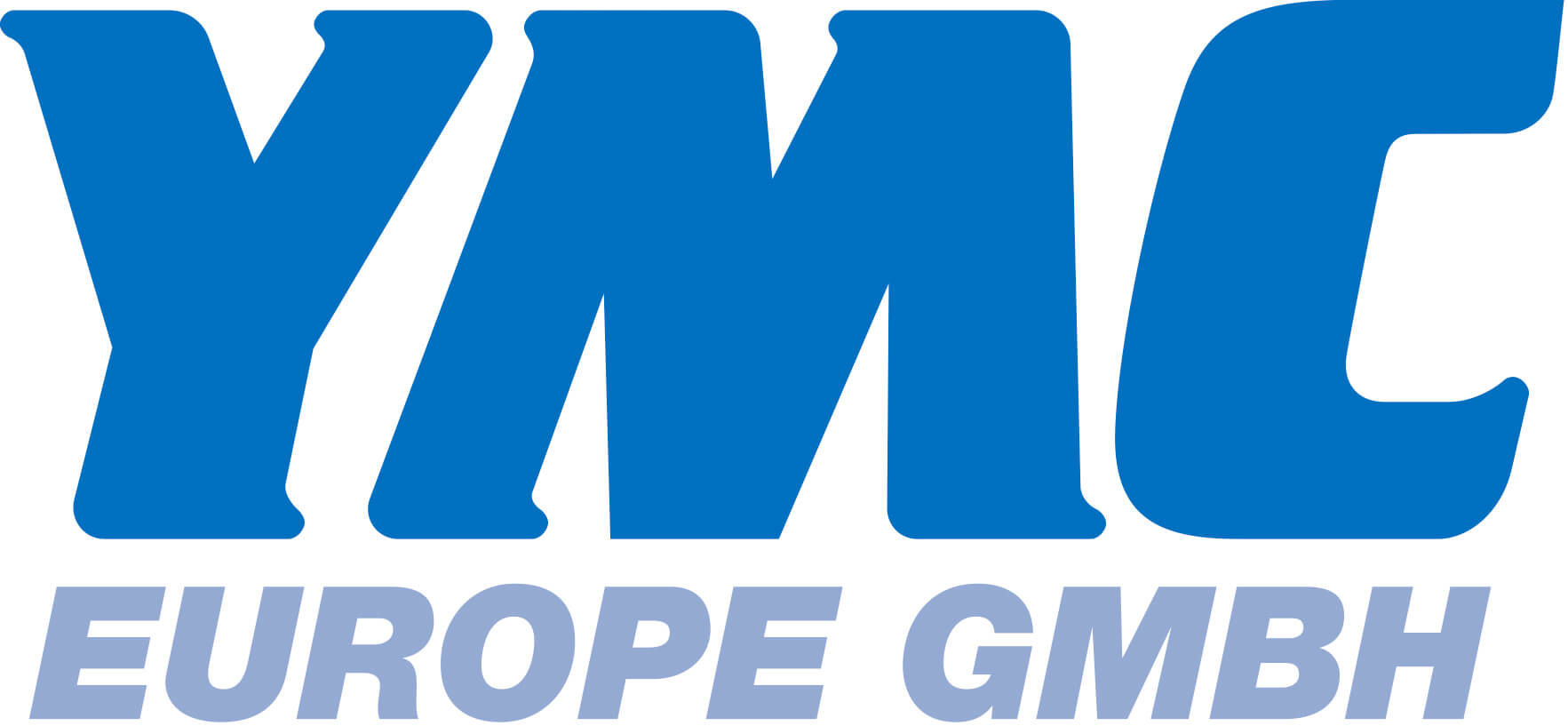Introduction
Cork taint is a common wine fault that leads to off-putting odors in a wine. Predicting this fault is challenging as it can occur in any naturally corked wine of any variety, vintage, price point, or geographical region. Analytically detecting cork taint is also challenging because the sensory threshold for 2,4,6-trichloroanisole (TCA), an analyte that is a large contributor to the off-odor and taste, is in the low part-per-trillion (ppt) levels for most people. Here, detection and quantification of TCA at levels well below the threshold are demonstrated. HS-SPME was used for sample preparation and analysis was performed with LECO's Pegasus BT GC-TOFMS system. The Pegasus BT provides full m/z range data and sensitivity which make it ideal for screening target analytes and/or general unknowns. This robust tool makes your routine analyses easy and has the potential to uncover what you've been missing.

 Figure 1. A GC-TOFMS chromatogram for a Shiraz wine sample spiked with TCA at 100 ppt is shown. Many aroma analytes are observed in the chromatogram. TCA is highlighted with extracted ion chromatograms (XIC) of m/z 197 and m/z 196.96. The narrowed mass range helps focus on the target analyte rather than other peaks with the same nominal m/z. The deconvoluted spectrum (top) is shown along with the NIST library match (bottom spectrum) for TCA at this level.
Figure 1. A GC-TOFMS chromatogram for a Shiraz wine sample spiked with TCA at 100 ppt is shown. Many aroma analytes are observed in the chromatogram. TCA is highlighted with extracted ion chromatograms (XIC) of m/z 197 and m/z 196.96. The narrowed mass range helps focus on the target analyte rather than other peaks with the same nominal m/z. The deconvoluted spectrum (top) is shown along with the NIST library match (bottom spectrum) for TCA at this level.




